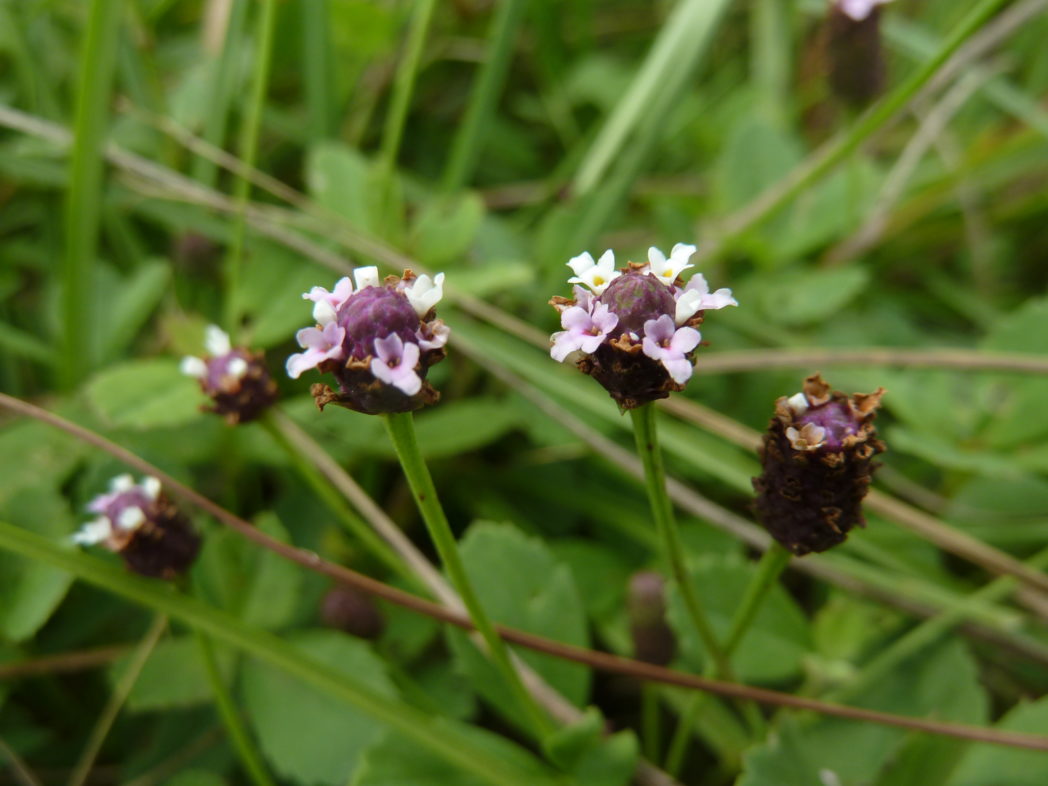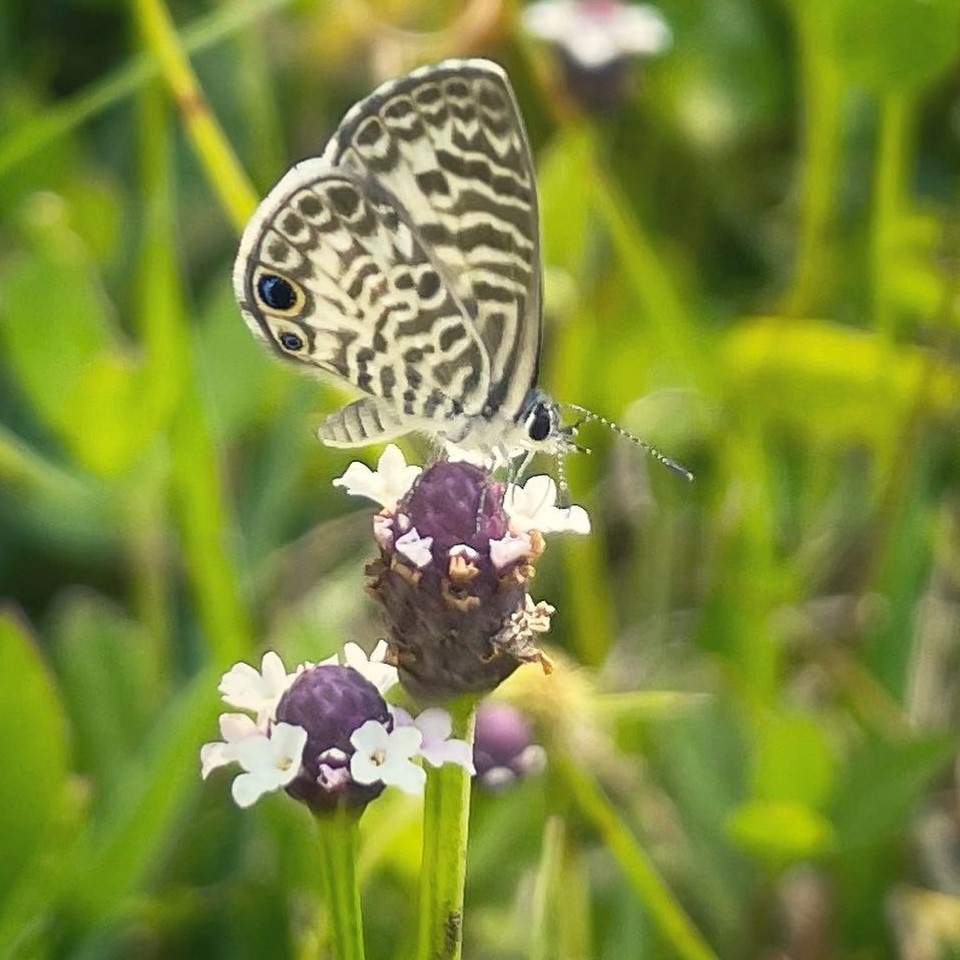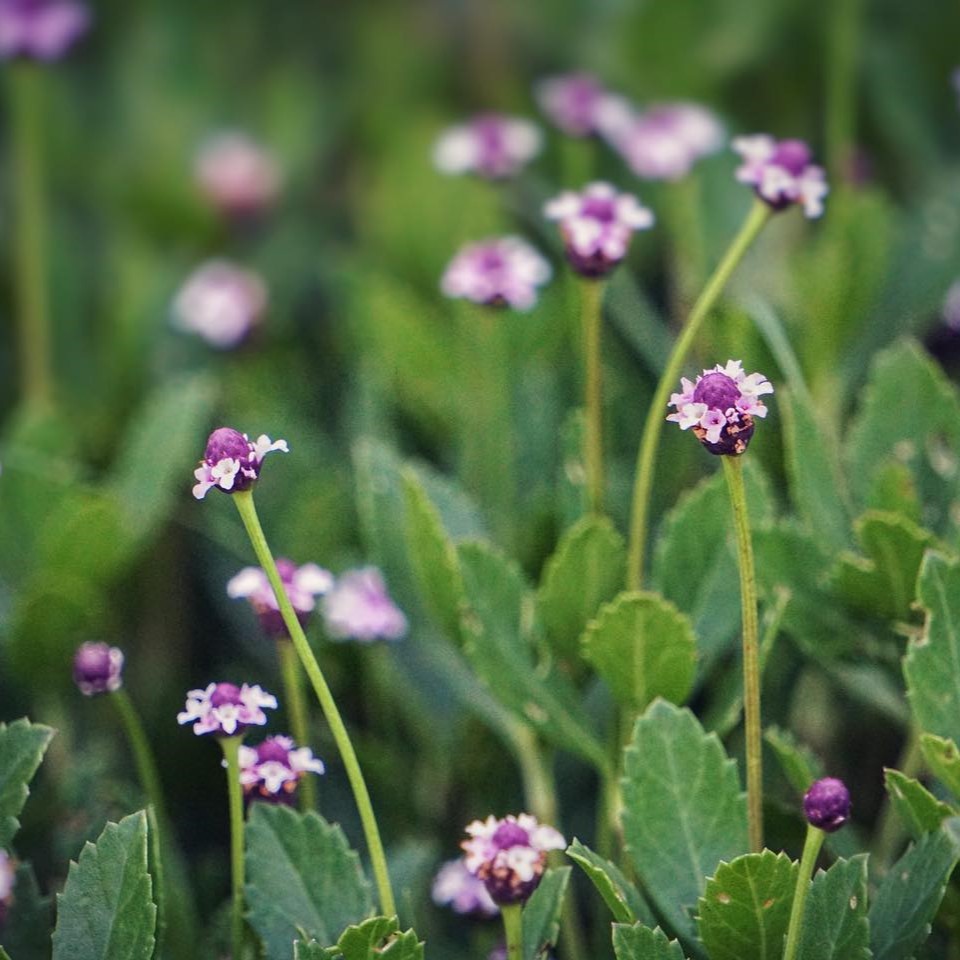Frogfruit
Pictured above: Frogfruit (Phyla nodiflora) by Eleanor Dietrich. Click on terms for botanical definitions. View post as a PDF.
Frogfruit (Phyla nodiflora) is known by many names including Turkey tangle fogfruit, Capeweed, Matchhead, Creeping Charlie and Carpetweed. Regardless of what you call it, Frogfruit is both a versatile and vital wildflower. It is a good nectar source for bees and small butterflies such as hairstreaks, and is the larval host for the White peacock (Anartia jatrophae), Phaon crescent (Phyciodes phaon), and Common buckeye (Junonia coenia) butterflies. It occurs naturally in hammocks, beaches, and lawns and along roadsides. This evergreen perennial is low-growing and creeping, often forming a dense mat of green foliage. Its distinct white and purple flowers are small but very showy, particularly when planted in mass.
Frogfruit’s distinct yet tiny flowers are composed of several to many white to pinkish flowers surrounding a dark purple center. They are born on relatively long erect stalks, giving the appearance of little matchsticks (hence the common name “Matchhead.”) Leaves are petiolate and elliptic to oval with tapered bases and toothed margins. They are oppositely arranged. Stems are generally prostrate.
Family: Verbenaceae (Verbena family)
Native range: Throughout Florida
To see where natural populations of Frogfruit have been vouchered, visit www.florida.plantatlas.usf.edu.
Lifespan: Perennial
Soil: Moist to moderately dry sandy, clay or loamy soils
Exposure: Full sun to partial shade
Growth habit: 2–3”+
Propagation: Cuttings, division
Florida regions of landscape suitability: North, Central, South
Garden tips: Frogfruit makes a great groundcover as it can form dense mats in the right conditions. It also works well in a hanging basket. Because the plant spreads and roots at nodes, it can be easily grown from cuttings or by division. Frogfruit has a moderately high and wind salt tolerance, making it a good plant for Florida’s coastal areas. It is especially valuable as a larval and nectar plant to draw butterflies.
Frogfruit plants are often available from nurseries that specialize in Florida native plants. Visit www.PlantRealFlorida.org to find a nursery in your area.
Learn more about Frogfruit from the Florida Native Plant Society and the Institute for Regional Conservation.



